Carmel Institute 2023-2024 Events Archive
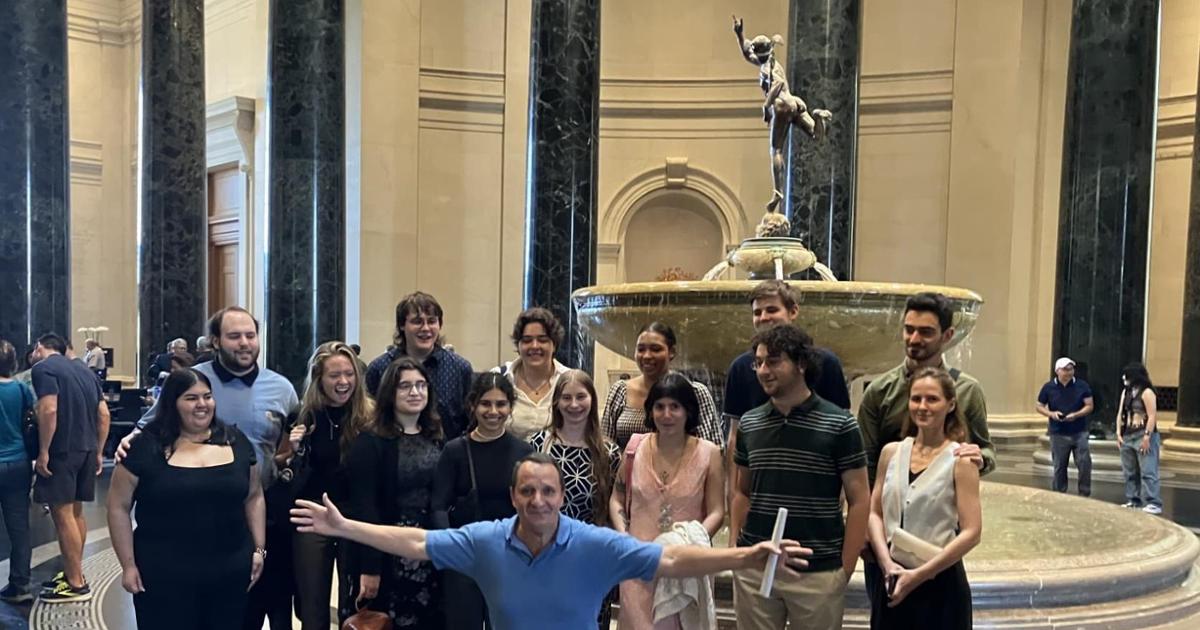
Catherine the Great treasures at the National Gallery of Art
On Saturday, September 28, 2024, The Carmel Institute organized a trip to the National Gallery of Art. Professor Fedyashin gave the students a 90-minute tour of the paintings acquired by Andrew Mellon from the Hermitage Museum in 1930-31. Of the twenty-one paintings that Mellon purchased, fifteen are currently on display.
Museum visits, concert attendance, and class-trips have been part of the Carmel Institute’s programming since its inception. As Professor Fedyashin has always reminded his students, although our knowledge about the past depends primarily on reading, history must also be walked, seen, touched, smelled, and tasted.
The tour combined the biographies of the artists, the history of Western art, and the story of the paintings’ acquisitions. The group explored Jan van Eyck’s The Annunciation (c. 1434), Sandro Botticelli’s The Adoration of the Magi (c. 1478), Pietro Perugino’s Crucifixion (c. 1482), Raphael’s Alba Madonna (c. 1510), Titian’s Venus with a Mirror (c. 1555), Sir Anthony van Dyck’s Isabella Brants (1629); Rembrandt’s Man in Oriental Costume (c. 1635), A Polish Nobleman (1637), A Woman Holding a Pink (1656); and finally Jean Siméon Chardin’s The House of Cards (c. 1737). The students also read two chapters of Richard Wortman’s Scenarios of Power, which placed the images and acquisition history into the context of the socio-political symbolism during Catherine the Great’s reign.
Dr. Fedyashin told the students about each painting’s acquisition by the Romanovs. All the paintings explored during this trip were Catherine the Great’s purchases. The French philosopher Denis Diderot was the most prominent of her agents in Europe. He was directly involved in negotiating the purchase of Rembrandt’s paintings in the 1770s. Chardin’s quiet domestic scene was also his recommendation. The addition to the Winter Palace of the Hermitage building that Catherine commissioned not only reflected the new neoclassical architectural trend, but also pointed to another side of her character—her love for quiet spaces to read and seek shelter from the Imperial Court. Although not a masterpiece on the scale of the other seven paintings, Chardin’s canvas with its lone card player on a minimalist background reflected Catherine’s desire for quiet contemplation.
The trip was a visual component of a holistic experience that stays with students of history for much longer. After the tour, the group went to lunch. Engaging with the history of art on the page and in the museum helped to open young minds to the importance of art history as well as the great legacy of American philanthropy.
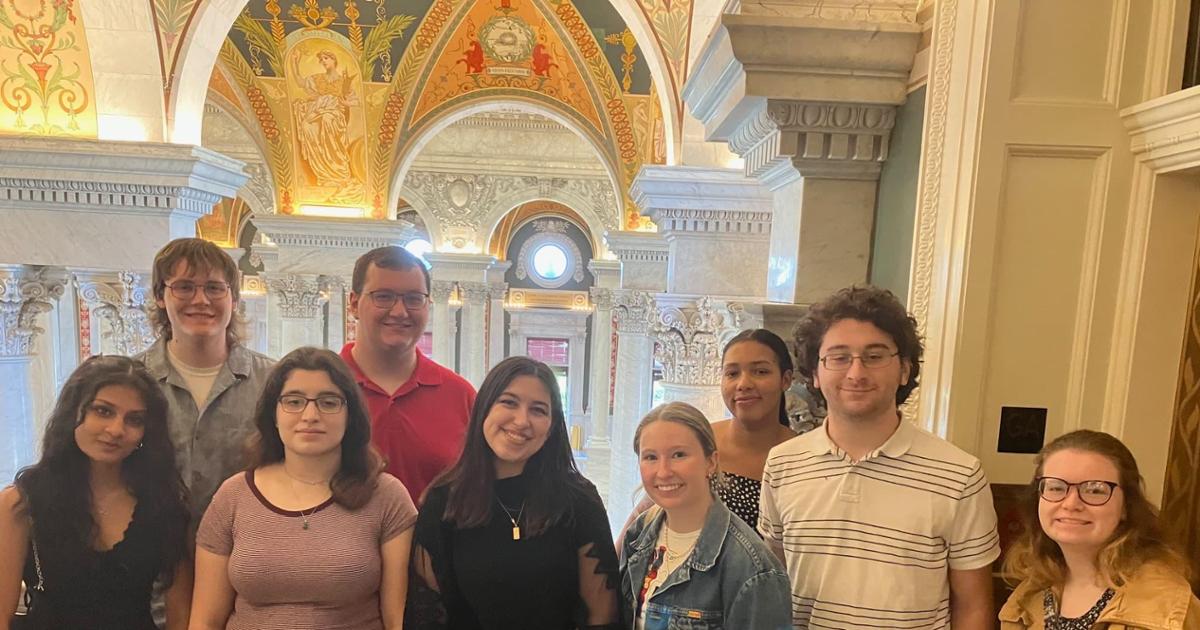
Exploring the Library of Congress: A Journey through James H. Billington’s Legacy
On September 21, 2024, the Carmel Institute organized a student trip to the Library of Congress. Not only did the students enjoy a tour of one of the most beautiful buildings in Washington, DC, but they were also guided through the process to get Library of Congress Reader Card. The card gets them access to do active research in any of the many Library of Congress Reading Rooms.
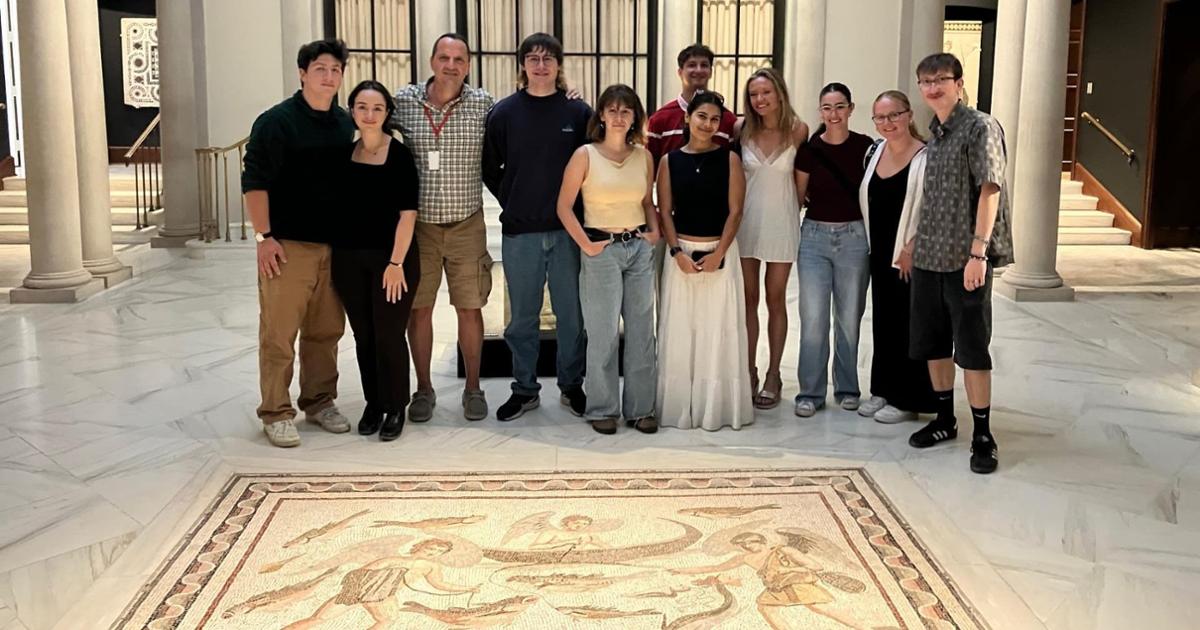
Students Discover Byzantine Treasures Here in DC
On Saturday, August 31 and September 7, 2024, the Carmel Institute organized tours of one of Washington’s most unique museums, Dumbarton Oaks. Dr. Fedyashin guided students through an exploration of Dumbarton Oaks permanent Byzantine art collection. The group examined and discussed the evolution of classical art from the Hellenic period into the Roman Empire and then the Byzantine era. Dr. Fedyashin pointed out the influence of Orthodox Christianity on the portrayal of the human figure through sculpture, sarcophagi, and religious art. The students also examined the highlights of the museum’s current special exhibit “Striking Designs: Communicating Through Coins.”
Museum visits, concert attendance, and class-trips have been part of the Carmel Institute’s programming since its inception. As Professor Fedyashin has always reminded his students, although our knowledge about the past depends mostly on reading, history must also be walked, seen, touched, smelled, and tasted.
After the tour, the students went to lunch at Divan Café, where they sampled Turkish and Mediterranean cuisine. Experiencing the classical and Byzantine through exhibits helped to open young minds to the wonders of history as well as the great legacy of American philanthropy.
For more about the Dumbarton Oaks, please visit https://www.doaks.org/
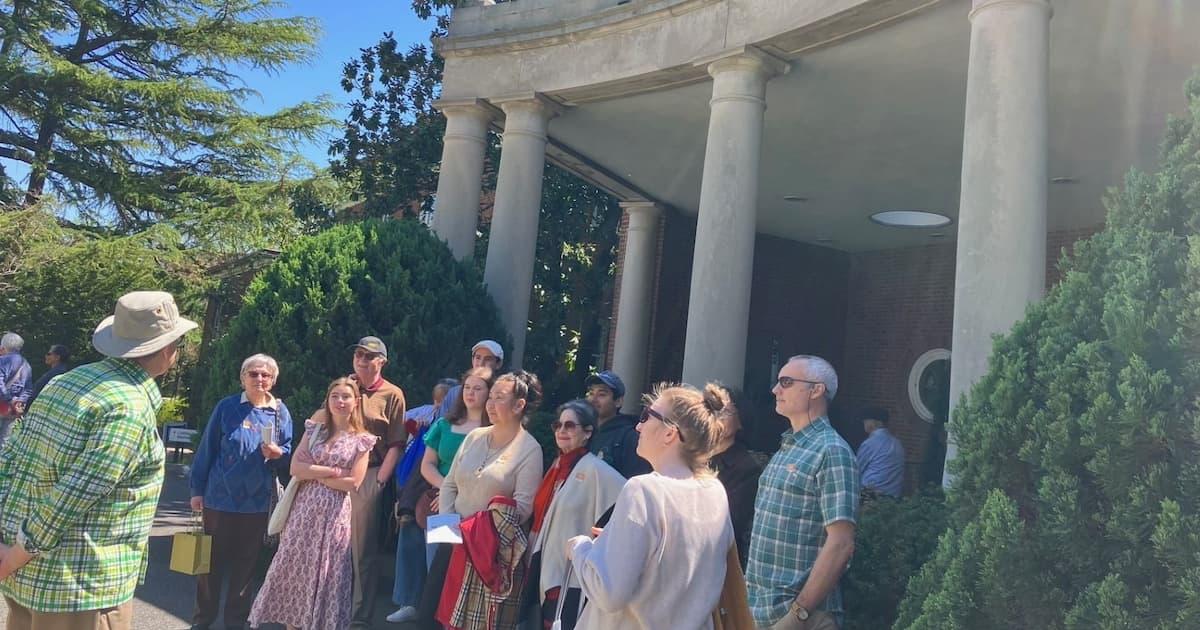
Students View Russian Art in Person
On Sunday, April 11, 2024, the Carmel Institute organized a student trip to the Hillwood Estate, Museum & Gardens. The group explored Marjorie Merriweather Post’s superb collection of Russian imperial porcelain and jewelry, which she acquired while accompanying her third husband Joseph Davies to Moscow between 1937 and 1938 after President Roosevelt asked him to serve as ambassador to the USSR.
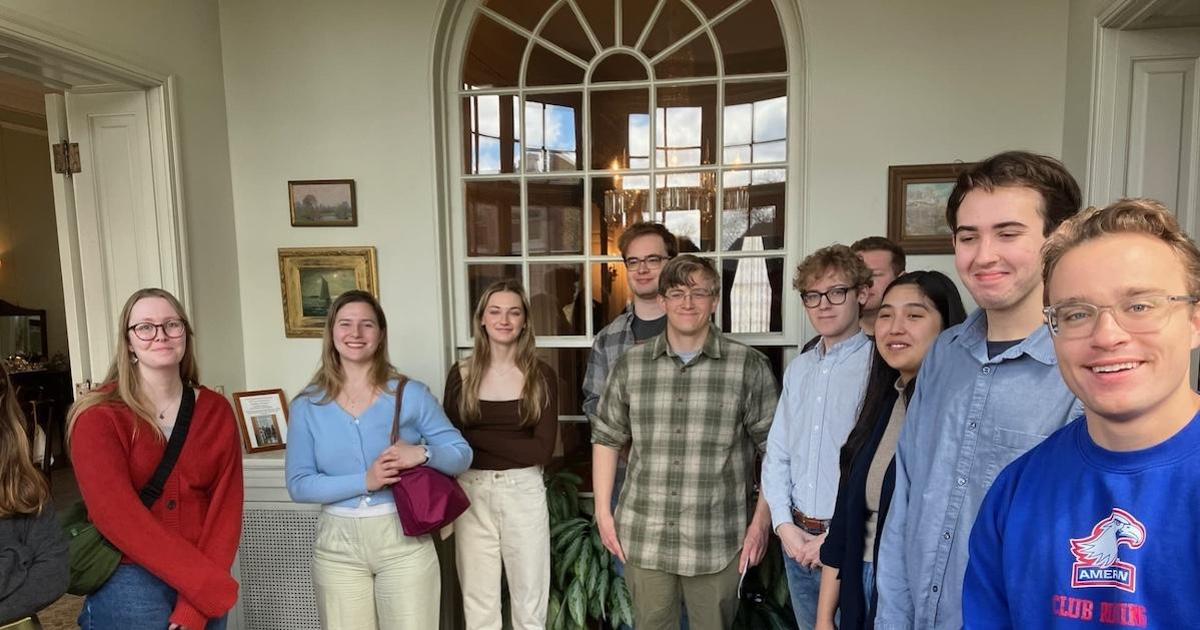
Exploring Great War Themes at the Wilson House
On Saturday, April 6, 2024, The Carmel Institute organized a trip to the Woodrow Wilson House on S St in Washington’s Kalorama neighborhood. Tour guide David Steigman and Professor Fedyashin gave the students a 90-minute tour of the house during which they explained how Wilson and Lenin, who never met, became existentially connected due to the maelstrom of the Great War.
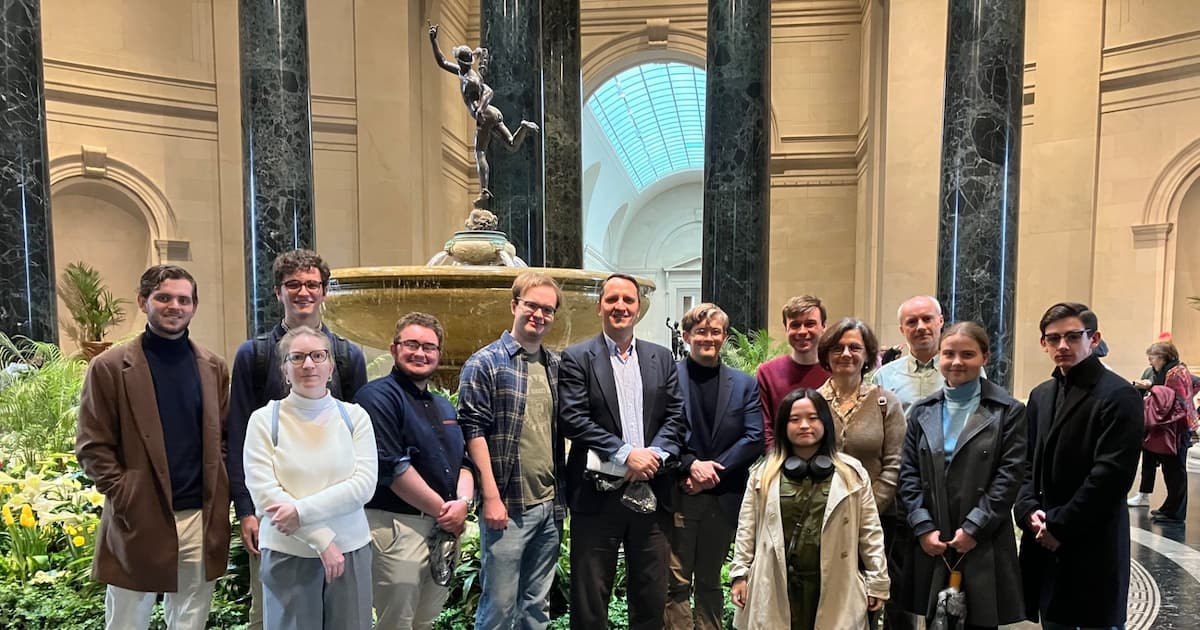
Experiencing Russian Hermitage Paintings at the National Gallery of Art
On Saturday, March 23, 2024, Professor Fedyashin guided students and several faculty members through the National Gallery of Art. His tour combined the biographies of the artists, the history of Western art, and the story of how the Smithsonian came to possess 21 paintings that were once in the Russian tsar's collection.
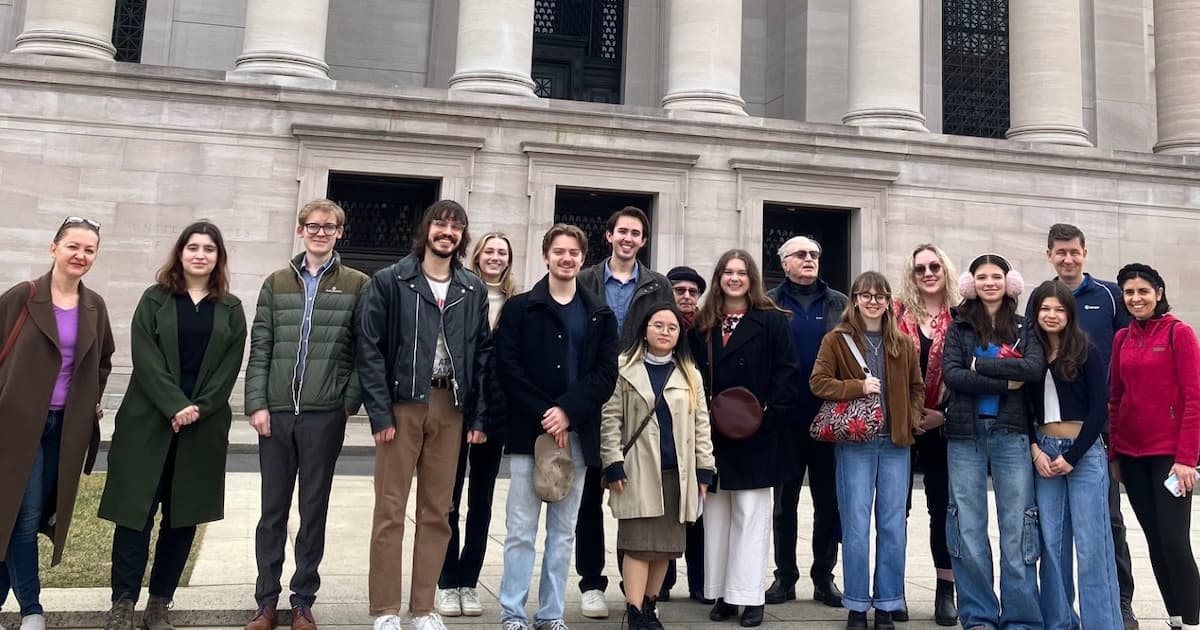
Students See and Learn about Russian Hermitage Paintings at the National Gallery of Art
On Saturday, March 2, 2024, The Carmel Institute organized a trip to the National Gallery of Art. Professor Fedyashin gave the students and several members of faculty a 90-minute tour of the paintings acquired by Andrew Mellon from the Hermitage Museum in 1930-31. Of the twenty-one paintings that Mellon purchased, fifteen are currently on display.
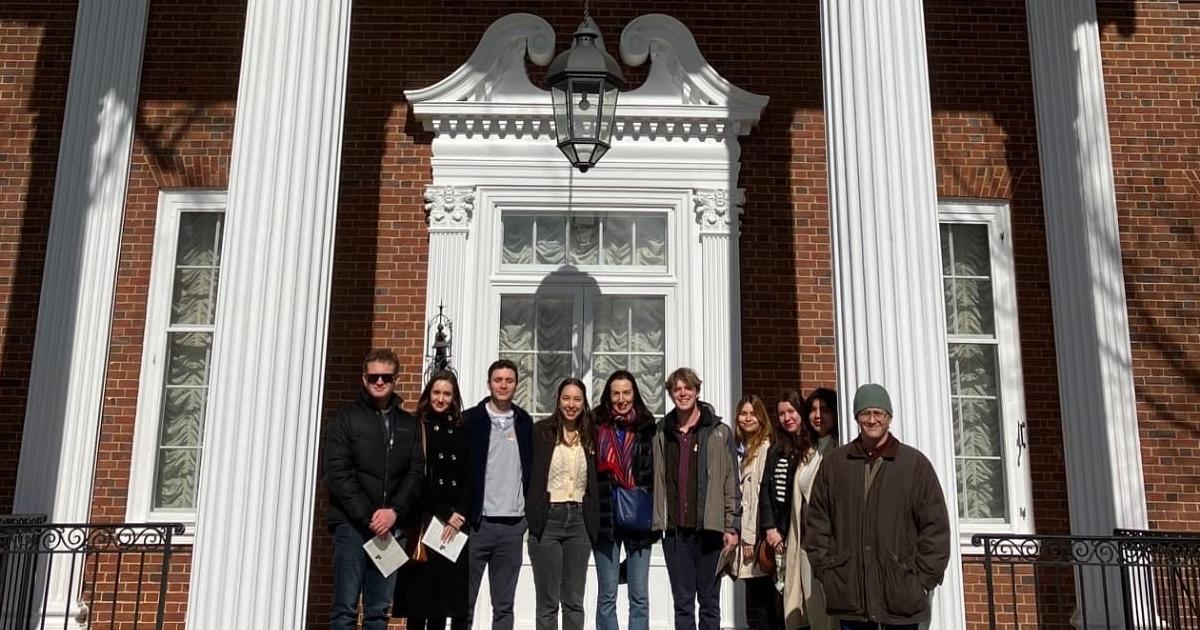
Students see Russian Imperial treasures at the Hillwood Museum
On Saturday, February 10, 2024, the Carmel Institute organized a student trip to the Hillwood Estate, Museum & Gardens. The group explored Marjorie Merriweather Post’s superb collection of Russian imperial porcelain and jewelry, which she acquired while accompanying her third husband Joseph Davies to Moscow between 1937 and 1938 after President Roosevelt asked him to serve as ambassador to the USSR.
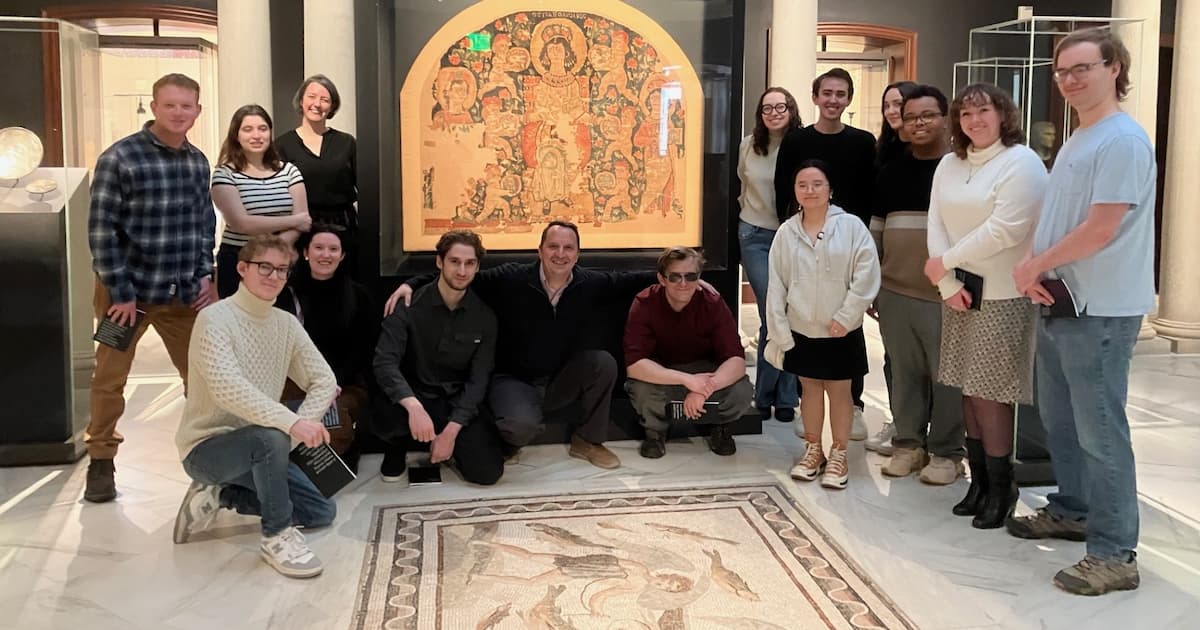
Students see Byzantine artifacts at the Dumbarton Oaks Museum
On Saturday, February 3, 2024, The Carmel Institute organized a trip to one of Washington’s most unique museums, Dumbarton Oaks. Dr. Fedyashin brought students from American and George Washington universities to explore Dumbarton Oaks’ new exhibit called “Rich in Blessings: Women, Wealth, and the Late Antique Household.”
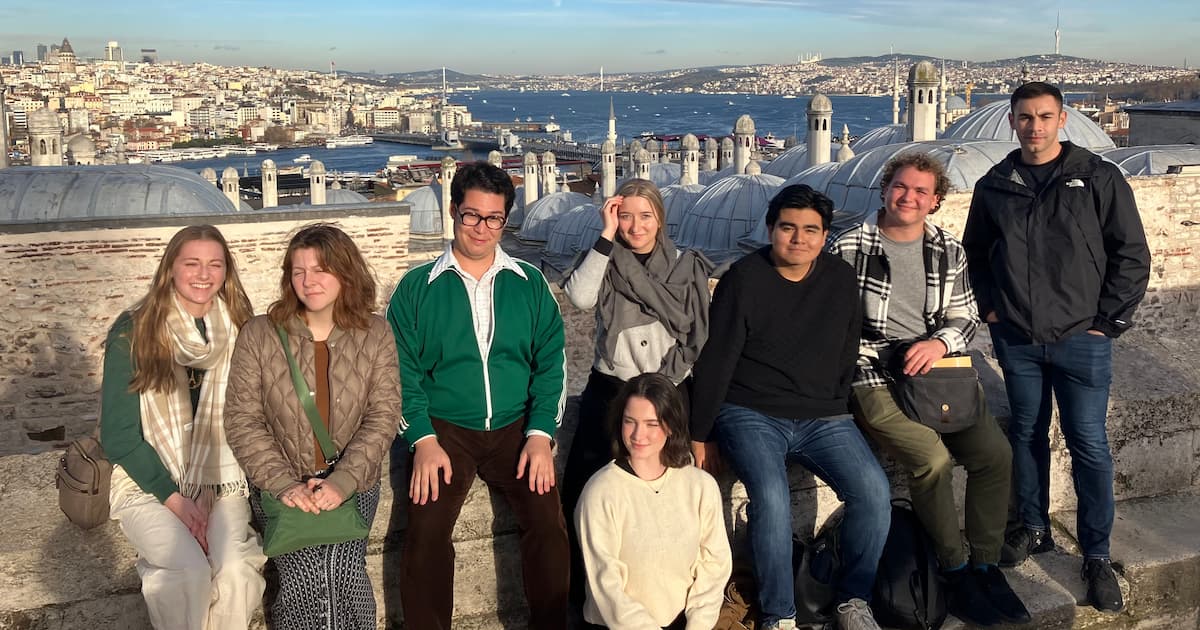
The Culture of Eastern Orthodoxy: Byzantine Influences on Russia and Eurasia over Winter Break 2023
In December of 2023, the Carmel Institute sponsored a class-trip to Istanbul for a group of students from American and George Mason universities. It explored the legacy of Byzantium and Byzantine Orthodoxy in Eurasia.
Before departing the US, the students read Bettany Hughes' Istanbul: A Tale of Three Cities as a general introduction to the history of the Byzantine Empire and Constantinople. Homer’s legendary Iliad was an optional reading. The class combined discussions of the books with visits to churches, museums, mosques, art galleries, and archaeological sites in Istanbul and beyond. In the process, students explored the history of the Byzantine Empire, the evolution of Eastern Orthodoxy, and interconfessional relations throughout medieval and modern history. Dr. Onur İşçi of Kadyr Has University in Istanbul also joined the group on select museum visits, guided some of the tours, participated in discussions, and gladly answered many questions while touring Istanbul.
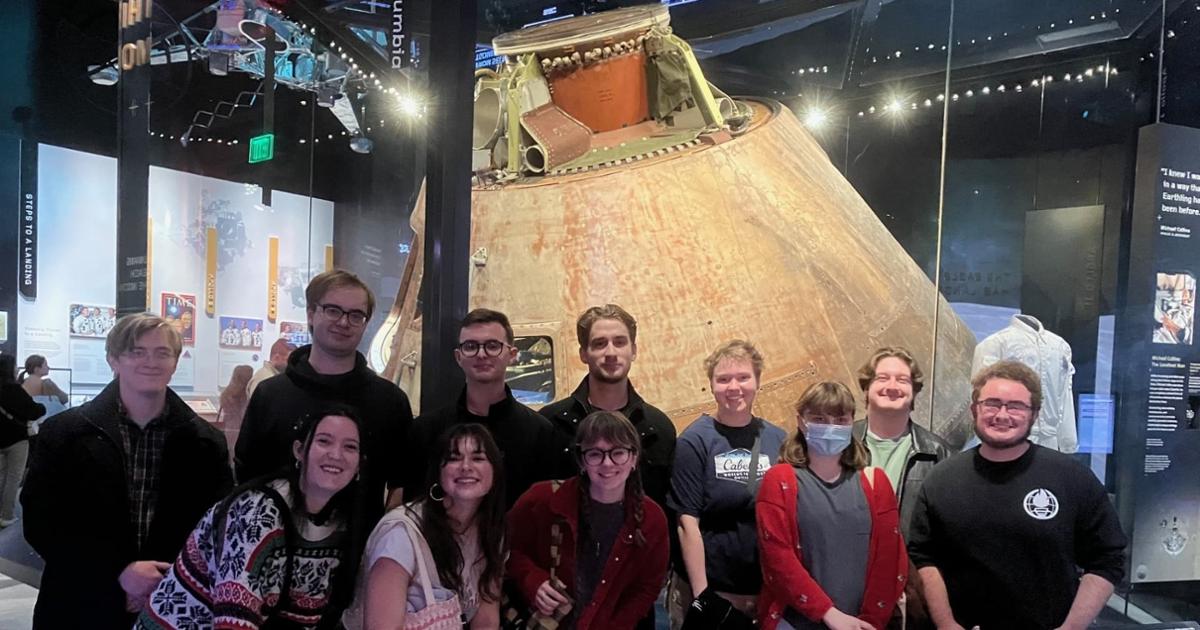
Students witness history through the artifacts of the Cold War's Space Race
Professor Anton Fedyashin walked students through the Space Race stages (Mercury, Gemini, Apollo) as one form of the Cold War conflict that dominated world politics and culture for nearly 50 years. Museums give students a deeper understanding of history through tangible artifacts.
Read more...
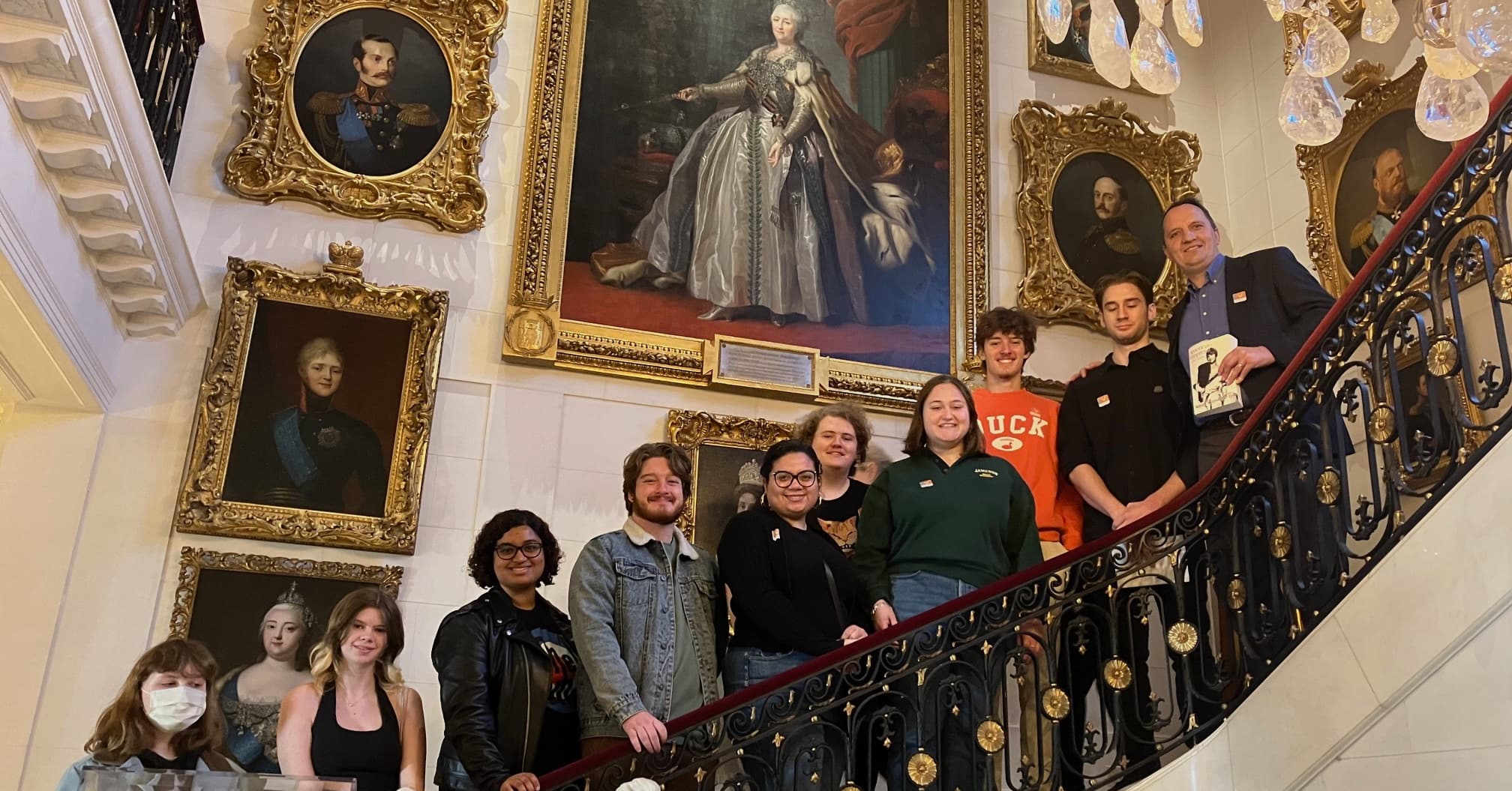
Students See Russian Cultural Objects Firsthand at the Hillwood Museum and Gardens
On Saturday, November 18, 2023, the Carmel Institute organized a student trip to the Hillwood Estate, Museum & Gardens. The group broke up in two to tour the mansion with Hillwood’s excellent docents. They explored Marjorie Merriweather Post’s superb collection of Russian imperial porcelain and jewelry, which she acquired while accompanying her third husband Joseph Davies to Moscow between 1937 and 1938 after President Roosevelt asked him to serve as ambassador to the USSR.
The Hillwood not only boasts two Faberge Eggs, but many other unique creations of Faberge’s workshop. It also has the original nuptial crown of the last Tsarina, Aleksandra. The students heard about Karl Briullov’s Portrait of Countess Julia Samoilova (1834) and Konstantin Makovskii’s A Boyar Wedding Feast (1883). Both originals are part of the museum’s permanent collection. The students then explored the religious art collection and talked about the Romanov dynasty, almost all of whose members are represented in the portraits that greet visitors in the mansion’s grand vestibule.
Museum visits, concert attendance, and class-trips have been part of the Carmel Institute’s programming since its inception. As Professor Fedyashin has always reminded his students, although our knowledge about the past depends primarily on reading, history must also be walked, seen, touched, smelled, and tasted. Before coming to the Hillwood, the group read selections from Joseph Davies’s diplomatic memoir Mission to Moscow (1941) and watched Michael Curtiz’s film Mission to Moscow (1943).
At lunch at the Hillwood café, the students also tried the famous Postum beverage. Ms. Post’s father, Charles William (C. W.) Post invented this drink in the late nineteenth century, and it gave its name to the Postum Company, which he founded in Michigan. Made from roasted wheat-bran and molasses, Postum became the nucleus around which C. W. Post built his business empire, which eventually became General Foods.
The trip was a visual component of a holistic experience that stays with students of history for their entire lives. Engaging with history on the page, on the screen, and in motion helped to open young minds to the importance of cultural diplomacy and the great legacy of American philanthropy.
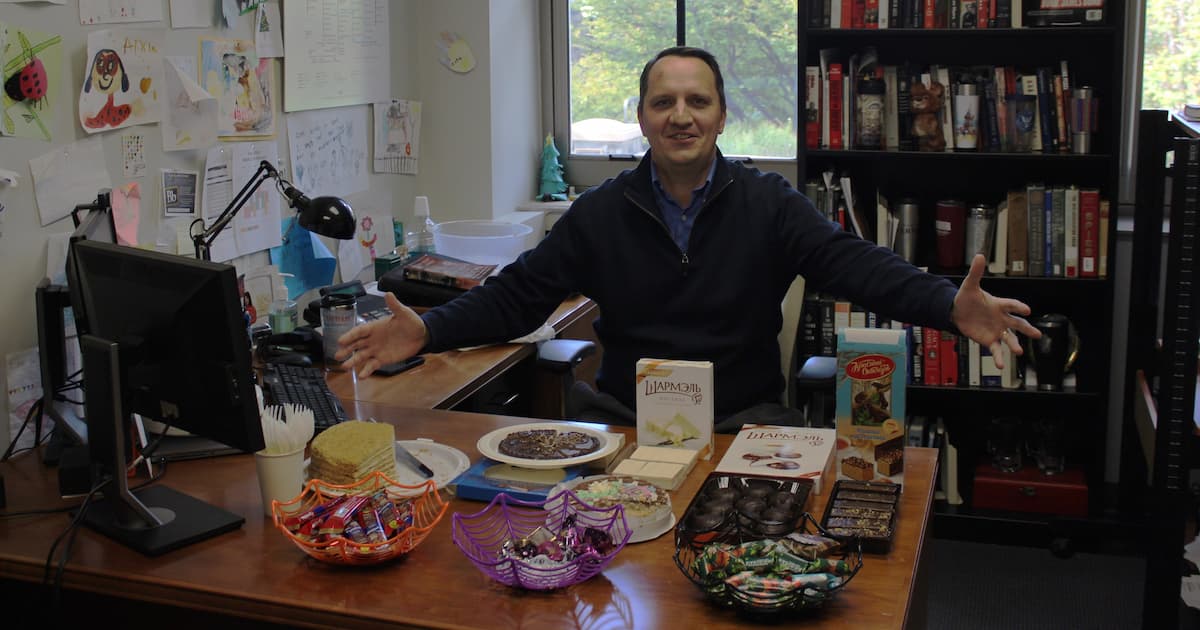
Carmel Institute Director offers Russian candies for the CAS Halloween Trick-or-Treat!
The day after Halloween, AU’s College of Arts and Sciences held the “CAS Trick-or-Treat in Battelle” event. Professors welcoming students to their offices with candy and other treats from the regions of their academic specialization.
Carmel Institute Director Anton Fedyashin treated students to candy and pastries from Russia, Poland, Ukraine, and Moldova. “Mishka kosolapyi,” “Belochka,” and “Ptich’e molko” candy represented Russia, as did the “Medovik,” or Honeycake, torte. Students could also sample a piece of “Kievskii” torte from the Roshen company. For those with a taste for chocolate covered waffle, a slice of the Polish “Torcik Wedlowski” offered a perfect snack. And to round out the region, Moldovan Clepsidra candies offered chocolate-covered praline.
Many students stopped by for a taste of Eastern Europe and a chat about the region’s rich culinary history and the department’s course selection for the spring semester.
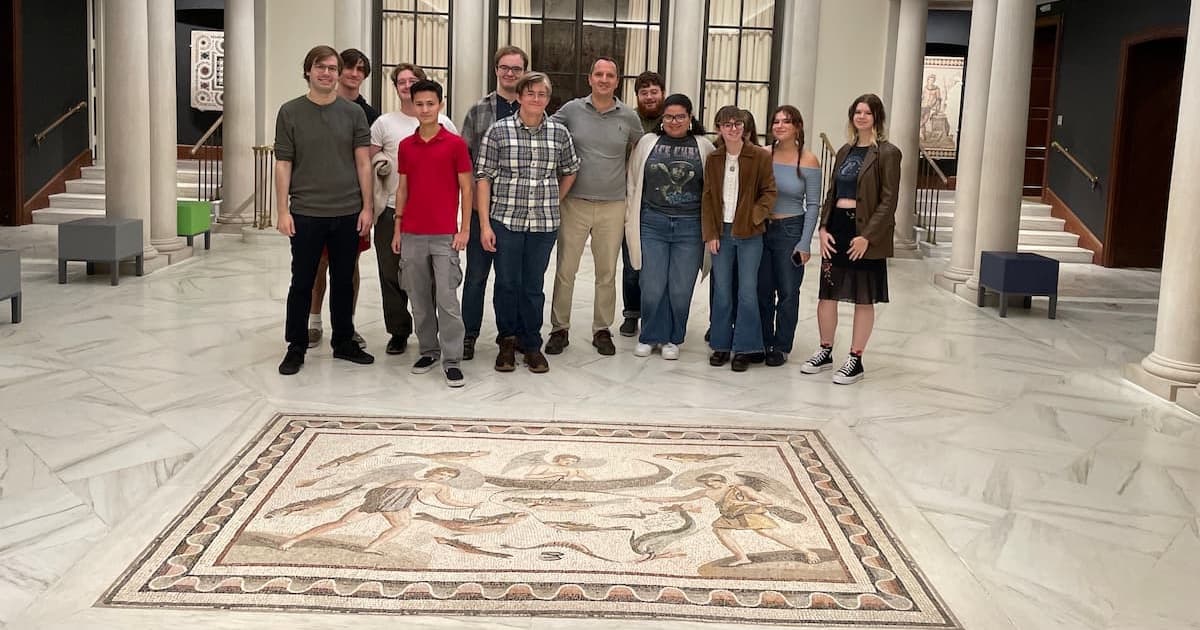
Students Explore a Little-Known Gem: Dumbarton Oaks Museum
On Saturday and Sunday, September 23 and 24, 2023, the Carmel Institute organized two trips to one of Washington’s most unique museums, Dumbarton Oaks. Dr. Fedyashin gave the students a 90-minute tour of Dumbarton Oaks’ magnificent Byzantine collection with a focus on the evolution of the human body as a religious symbol from classical antiquity to Byzantine Christianity. The tour began with the figurine of Hephaistos from the fifth century BCE and culminated with El Greco’s haunting The Visitation (1610-1614). Before visiting Dumbarton Oaks, the students also listened to Igor Stravinsky’s ‘Dumbarton Oaks’ Concerto and discussed the importance of the 1944 Dumbarton Oaks Conference in laying the groundwork for the creation of the United Nations Organization in 1945. The group also toured the Pre-Columbian collection in the stunning gallery designed by renowned American architect Philip Johnson.
Museum visits, concert attendance, and class-trips have been part of the Carmel Institute’s programming since its inception. As Professor Fedyashin has always reminded his students, although our knowledge about the past depends mostly on reading, history must also be walked, seen, touched, smelled, and tasted. Having discussed Emperor Constantine VII's De Administrando Imperio (the Dumbarton Oaks bi-lingual edition from 1967), Dr. Fedyashin’s classes got to experience bit of the world in which this historic document was created. The trip contextualized the first text that described the political structure and trading activities of the Rus states. And this holistic experience of history will stay with them for much longer. Dr. Fedyashin’s classes also read Andrzej Poppe's "The Political Background to the Baptism of Rus',” part of the Dumbarton Oaks Papers (1976) as well as former Dumbarton Oaks director Edward Keenan’s “Muscovite Political Folkways” (1986). Since so many paths lead back to Dumbarton Oaks in Byzantine and Muscovite studies, it is a blessing to have this unique museum so close to AU.
After the tour, the students went to lunch at Divan Café, where they sampled Mediterranean cuisine as they discussed the magnificent collection that Robert and Mildred Bliss bequeathed to Harvard University in 1940 and made available to the public for free. Experiencing the Byzantine past on the page and in the museum helped to open young minds to the wonders of history as well as the great legacy of American philanthropy. American University is grateful to Ms. Susan Carmel for creating the Carmel Institute, which affords students such remarkable opportunities to learn about humanity’s shared artistic and spiritual past.
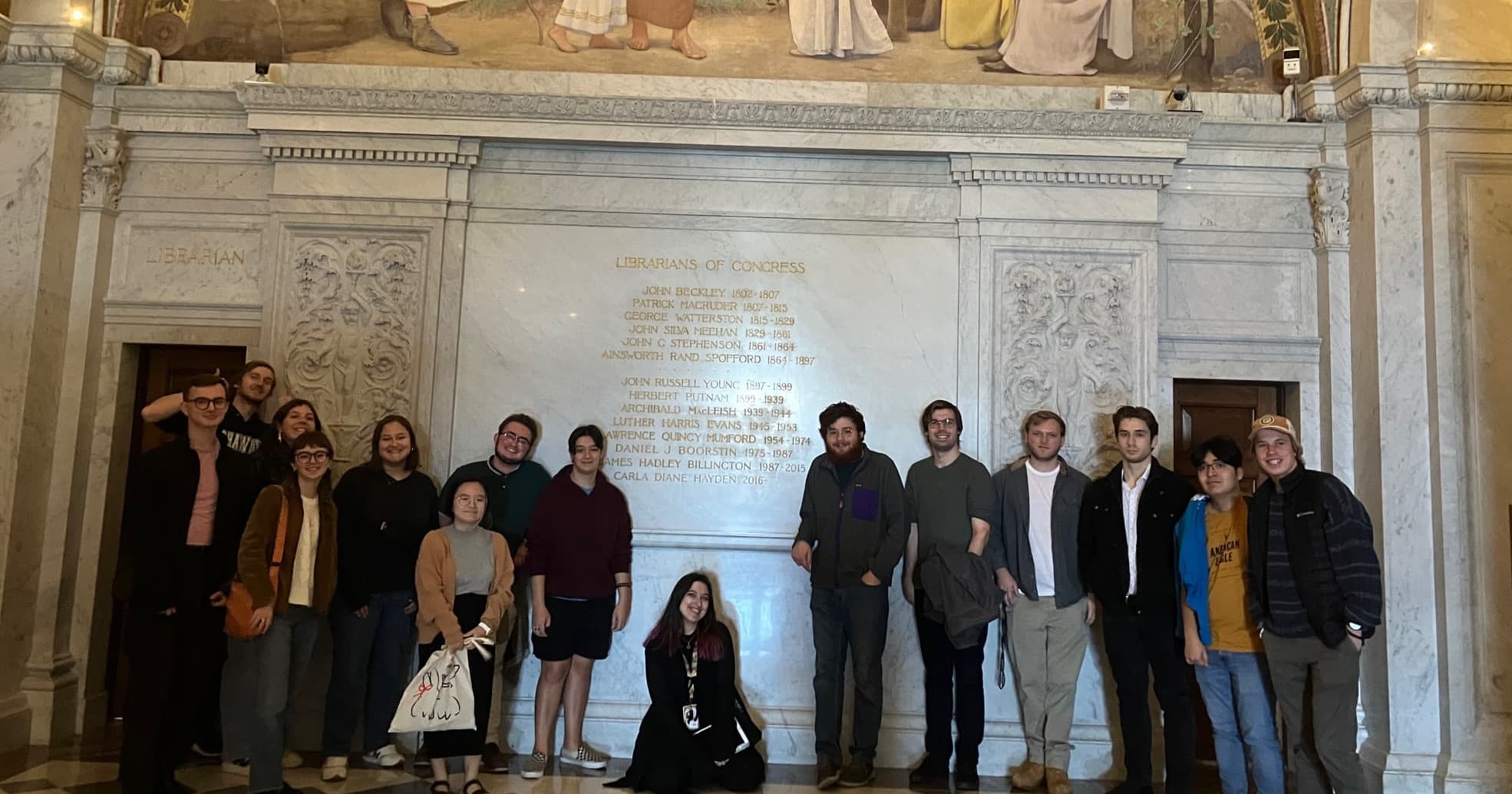
Exploring the Library of Congress: A Journey through James H. Billington’s Legacy
In fall 2023, students with a passion for history explored the Library of Congress with AU alumna Gabriella Folsom. Based in the nation's capital, history majors have the privilege of delving into history in a way that goes beyond the typical tourist experience. The Carmel Institute of Russian Culture and History supported a special academic trip that honored the legacy of one of its greatest supporters, former Librarian of Congress, Dr. James Hadley Billington, author of The Icon and the Axe, among many other books and articles about Russia.
Instead of the standard public tour, students registered as researchers and got their reader cards, granting them access to the Library's extensive collections and making them part of a rich intellectual tradition. Students explored the three iconic buildings—Jefferson, Adams, and Madison—connected by a web of tunnels, as well as highlights, such as the Office of the Librarian, the Mary Pickford Theater, the Great Hall, and the Gutenberg Bible. This hands-on approach not only provided a rare glimpse into the Library's vast collections but also set the stage for our students to utilize these invaluable resources in their future research.
The Library of Congress holds the distinction of being the largest in the world, boasting over 200 million items in its collections. It serves as a living testament to the significance of preservation and access. Established in 1800, the Library continuously safeguards collections that span centuries, setting the global benchmark for library collection management, digitization, and preservation. During the tour, Gabriella enlightened our students about the Library's mission, its role as Congress's library, and its de facto status as the national library.
One of the distinctive features of the Library of Congress is its international and universal collections. Approximately half of the Library’s collections are in languages other than English, and it proudly houses the largest Russian-language collection outside of Russia. Our students had the opportunity to explore James Billington's profound legacy during the tour. Billington, who served as the Librarian of Congress from 1987 to 2015, was a transformative figure, expanding the Library's reach to the public and ushering it into the modern age. Under his leadership, the Library's collections almost doubled from 85.5 million items in 1987 to more than 160 million items. He also pioneered digital initiatives, including the National Digital Library and a vibrant social media presence. Billington also championed numerous iconic Library programs, such as the National Book Festival, Junior Fellows program, and the Kluge Center, leaving an indelible mark on the institution's history.
Students were able to experience Billington’s legacy firsthand, from his construction of the underground connection between the Library and the U.S. Capitol, to his pioneering work in making the Library of Congress a hub of knowledge accessible to all. They also saw some of his most notable acquisitions and exhibitions—the 1507 Waldseemüller world map, sometimes referred to as “America’s birth certificate,” and the permanent exhibit of Thomas Jefferson’s library. Through their immersion in the Library's history, students discovered that this institution is more than just a repository of books; it serves as a vital intersection of history, accessibility, and the pursuit of knowledge.
Looking for older events? Check out our 2020 to 2022 events.